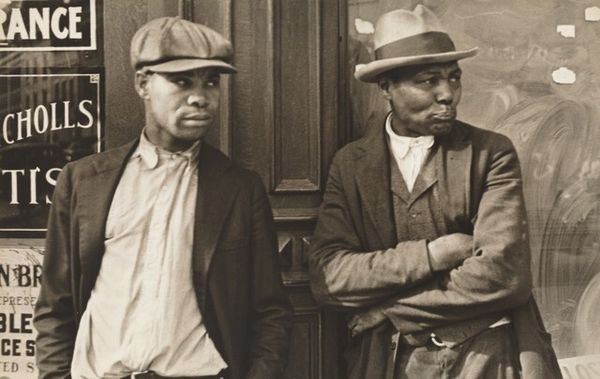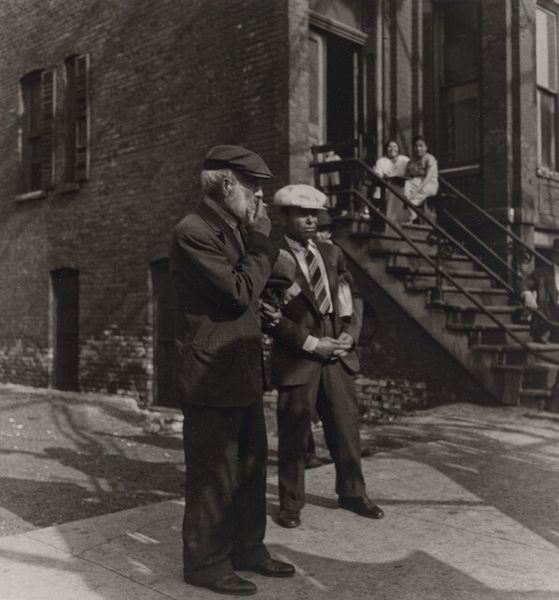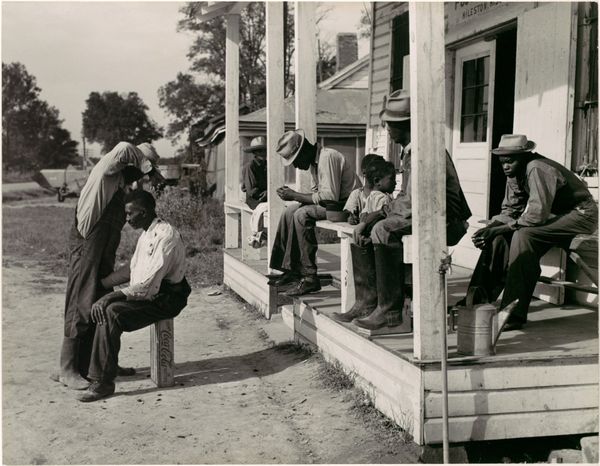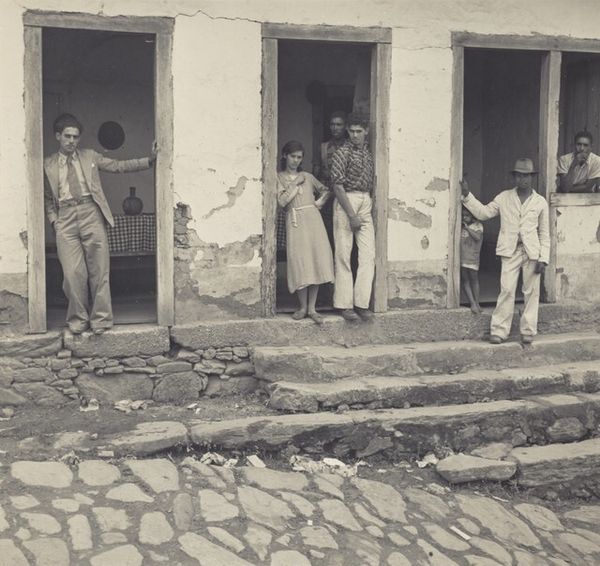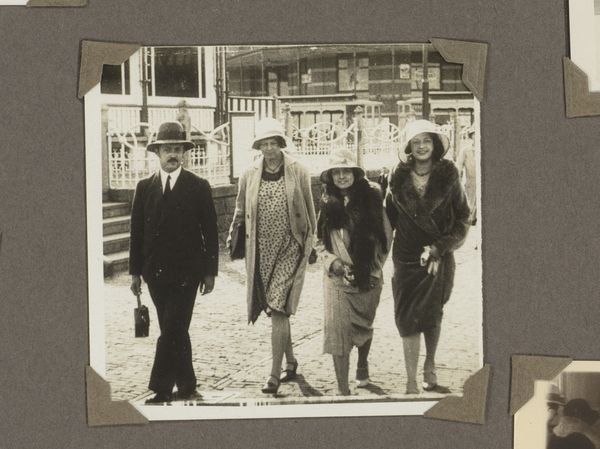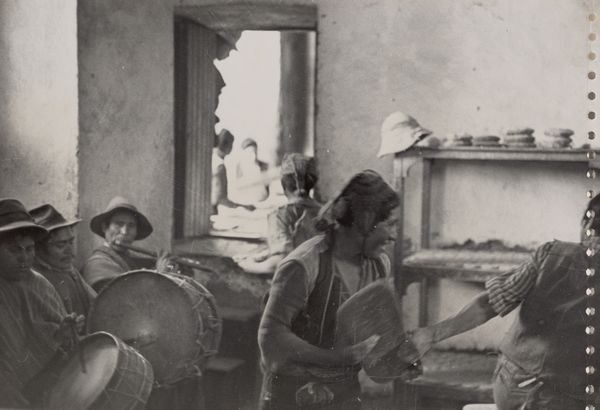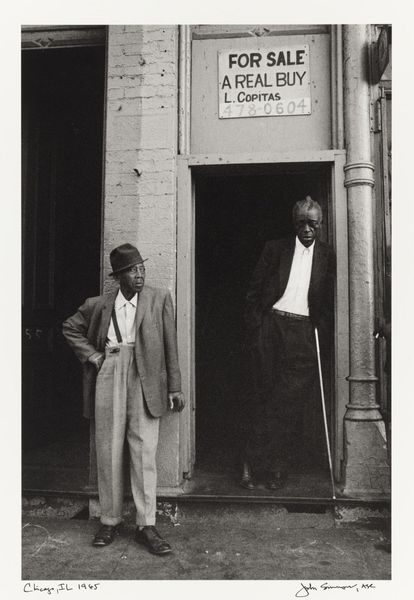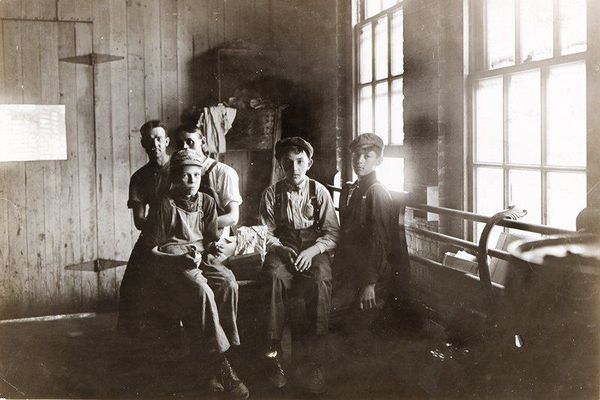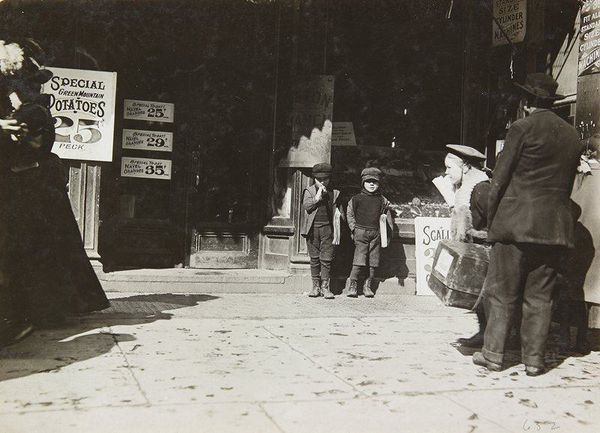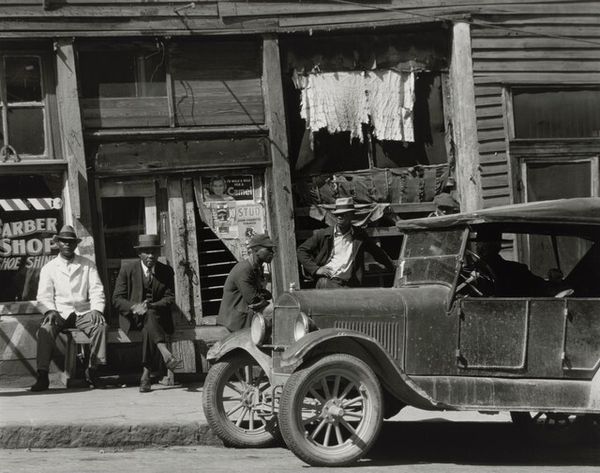
#
wedding photograph
#
black and white photography
#
photo restoration
#
black and white format
#
archive photography
#
historical photography
#
black and white theme
#
black and white
#
monochrome photography
#
monochrome
Dimensions: image: 22.7 × 33.7 cm (8 15/16 × 13 1/4 in.)
Copyright: National Gallery of Art: CC0 1.0
Curator: Gordon Parks's 1950 photograph, "Pool Hall, Fort Scott, Kansas," is a poignant image that speaks volumes about social realities in mid-20th century America. Editor: It’s strikingly stark, isn't it? A gathering of men framed by a weathered building feels immediately loaded with unspoken stories. Curator: Parks used this image to address themes of segregation and economic disparity prevalent in small-town America during this period, reflecting back through visual tropes associated with social realism. The individuals represent various layers of society. Editor: The men's attire… the hats, the dog…there's a potent symbolism at play, suggesting a spectrum of identities brought together in a very particular, masculine space. And then there’s the doorway in the background, framing even more men, deeper inside this implied community. Curator: The composition divides the figures into different visual planes and groupings, literally drawing the exterior group apart from the men crowded in the doorway. Parks made a choice to explore how race intersects with class, opportunity, and spatial access. He challenged conventional ideas around white identity in America and who could have power in certain contexts. Editor: Right. This creates such a visually tense atmosphere; the contrast between the sharply dressed men on the sidewalk and the somewhat hazy, cramped figures standing in the doorway feels crucial. Like two worlds rubbing shoulders. There’s a hint of the archetypal about it as well; an almost Western-style frontier ruggedness coupled with the dog symbol, too – a loyal witness. Curator: The window framing and weathered walls almost feel like metaphors for the lived experiences of these individuals, marked by social inequalities and yet also resilient, resistant, self-aware. Editor: The shadows almost seem to be reaching for them, and somehow the contrast highlights their faces and calls for them to be seen. Curator: This is why Parks's work is still relevant, because it urges us to confront these ongoing conversations and reexamine them from multiple viewpoints, in an intersectional framework. Editor: This photograph shows how a visual language embedded with enduring symbols is still resonant and moving today. The collective weight in those gazes speaks volumes across generations.
Comments
No comments
Be the first to comment and join the conversation on the ultimate creative platform.

